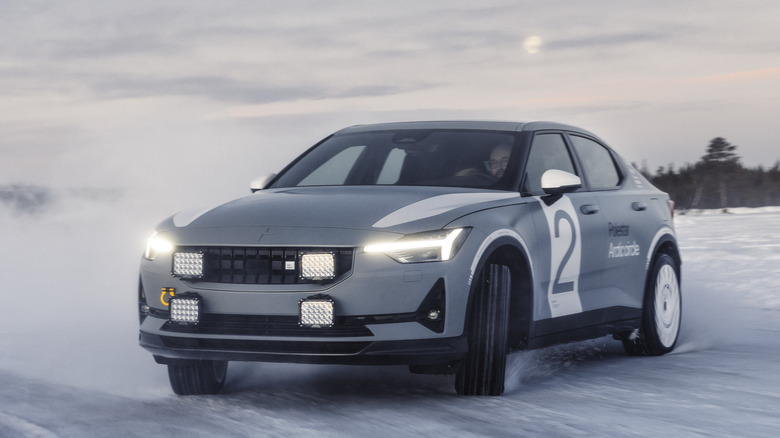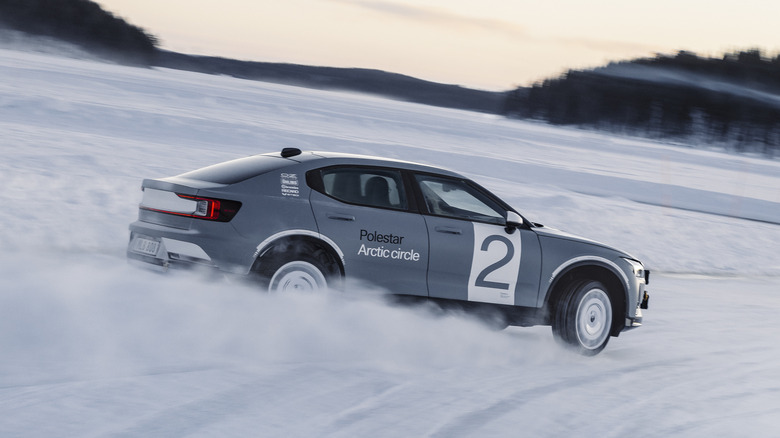How The Polestar 2 Arctic Circle Is Working To Fix One Of The Biggest Stigmas Around EVs
Electric vehicle buyers often have to face this one cold, hard fact about EV ownership: low temperatures are not an EV's forte. In fact, Tesla recently got in hot water in Korea over claims the company didn't disclose how its car's range suffered in an icy climate. Tesla's headquarters and factories in California, Nevada, and Texas are not winter wonderlands after all. Conversely, Polestar's native Sweden isn't exactly a tropical paradise, so the company should be well-versed in how its EVs perform in snow and ice.
This has resulted in the Polestar 2 "Arctic Circle" edition test vehicle. Last year, the vehicle was brought to life by Polestar's chassis engineer Joakim Rydholm, who moonlights as a rally driver. To test the vehicle for winter solstice shenanigans, Polestar took a regular Polestar 2 Long Range Performance model and kitted it out for extra performance.
The Polestar 2 received studded tires to better grip ice, fitted it with bracing on the struts to deal with the twisty bits of winter driving, and softened the suspension by a substantial margin as pavement was an optional driving surface. Huge rally lights complete the look as well.
According to Polestar, the brand tests its vehicles from December to March every year in Sweden's arctic climate (sometimes at temperatures as low as -31 degrees Fahrenheit) to figure out how to better improve its EVs.
Polestar's fun way of collecting data
Polestar did not, however, address the all-important issue of range with the Arctic Circle model, as it is not a model intended for production. The snow-ready Polestar does accomplish two very important things: First, thrashing a car around in the snow is never a bad thing as long as it's done safely.
Second, it shows that Polestar is actively working to document and figure out exactly how EVs perform in all climates, yeti-infested or not. The data collected will undoubtedly prove vital to the development of future EVs, especially those sold in climates where the weather can get extreme.
It's important to note that the world is still waiting for the Polestar 3 and 4 to hit dealerships after some delays, leaving the Polestar 2 as the brand's only production car at the moment. Polestar will likely use lessons learned in Arctic climates to incrementally upgrade its cars over time for better performance in the snow and cold. At least for now, Sweden seems like the perfect place to test icy weather performance by whipping a rally-ready EV around a frozen lake.

